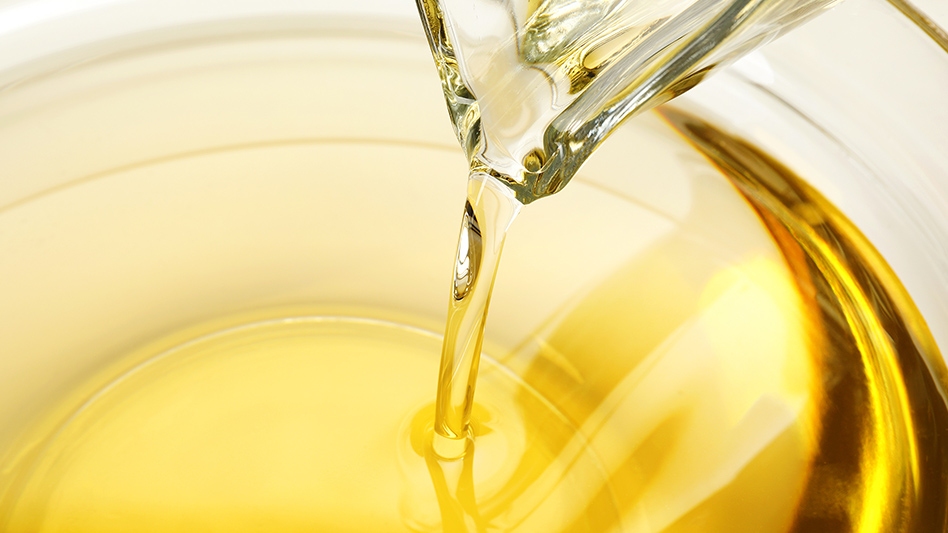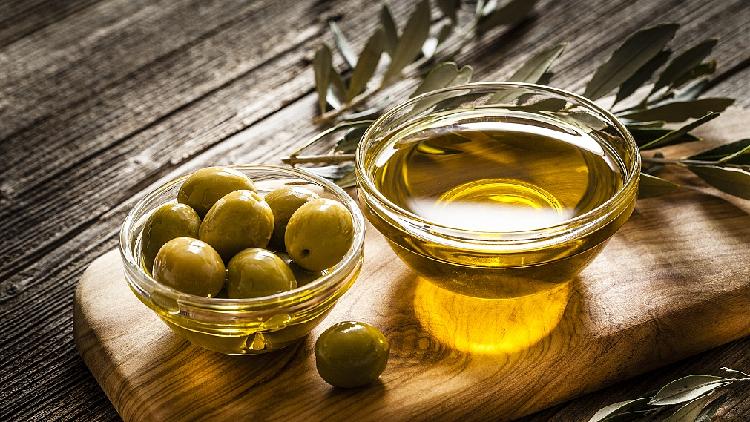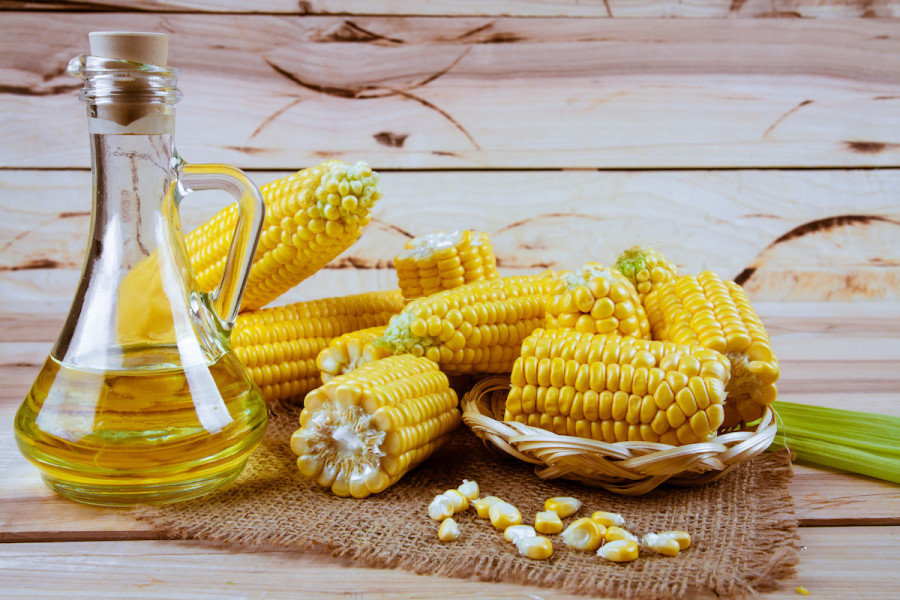Olive Oil vs Vegetable Oil: What Is The Difference And Which Is Healthier?

Every household kitchen has a supply of cooking oil. It’s accessible in a variety of formats and from a variety of sources. But one thing is certain: without proper cooking oil, no meal will be complete.
When it comes to cooking oil, the two most prevalent types are olive oil and vegetable oil. It is something that we all have in our kitchens. Even though they’re both oils, they’re not the same.
So, how do you distinguish between Olive Oil and Vegetable Oil? Olive oil is a cooking oil or liquid fat that is derived solely from olives. On the other hand, Vegetable Oil is a cooking oil or liquid fat made from seeds or fruits.
What is Olive Oil?
Fresh whole olives are used to extract live oil till the natural oils are produced. The olives are pressed into a machine that can be operated manually or automatically.
This oil is utilized for more than just cooking; it can also be used as lamp fuel, a cosmetic ingredient, or a pharmaceutical substance. It also has a significant function in religious rites and ceremonies.
Spain, Italy, and Greece are the main producers of olive oils. Olive cultivars of many sorts are used to make these. It comes in various flavors, textures, and shelf lives to suit a variety of applications. Depending on the maturity of the fruit, its hue can range from green to violet to black.
The Mediterranean region is home to the most olive trees. Since the eighth millennium BC, these have been in use.
What is Vegetable Oil, and how does it differ from other oils?
Oils from common seeds, including soybean, rapeseed, and cocoa butter, are extracted via Vegetable Oil. It’s mainly derived from palm and rice bran oil for the fruits.
Corn, sesame, hazelnut, peanut, sunflower, and grape seed are other popular vegetable oil sources worldwide. Other countries’ vegetable oils may differ depending on the geographical location and availability of oil sources.
These vegetable fats are made up of triglycerides, the same component found in animal fats. It can be used for industrial applications and as a fuel substitute, such as bio-fuels, in addition to cooking.
Israel and Palestine have been using it since 4500 BCE.

Is Vegetable Oil a Good Substitute for Olive Oil?
Yes, you certainly can! Though there will be a significant change in flavor, the advantages are far superior and healthier.
Why not use vegetable oil instead of olive oil?
Monounsaturated fat makes up the majority of olive oil’s fat content. According to a study by the American Heart Association (AHA), this sort of fat is essential for your health.
Always choose Extra Virgin Olive Oil, which is prepared without the use of heat or solvents. The nutrients in the oil are still intact because the treatment did not alter its quality or original form.
It’s crucial to remember that everything should be done in proportion. Olive oil is still called “fat,” and consuming too much might cause health problems.
Suggestions for Substituting Olive Oil for Vegetable Oil
Whether you’re trying to lose weight or want to eat healthier, we’ve got you covered. 
Here are some helpful hints and a simple approach to using olive oil:
Saute your food differently
Sauteing the meal enhances the flavor and aroma of the food. We usually start with a hot pan of ordinary cooking oil, add some garlic and onions, and then the primary item. We had no idea that a spoonful of oil could contain so many calories. To get rid of undesirable trans fat and unnecessary calories in your cuisine, switch to olive oils. When you eat it, it will seem less greasy and guilt-free.
Salad dressings can be improved
Did you realize that a spoonful of ordinary Caesar dressing or mayonnaise has a significant amount of calories? I’m sorry if I’m depressing you. It’s true. You’ve reduced your starch and meat intake, but you still smother your vegetables in salad dressing. That appears not to be the case. If you have some on hand, swap them out with an olive oil dressing. Two tablespoons of olive oil, a bit of salt and pepper, a squeeze of lemon, and a tablespoon of balsamic vinegar make a healthy salad dressing. It’s lower in calories and easy to make.
Make a healthier dessert by baking it
A moist cake can have a lot of vegetable shortening, while a cookie can have a lot of butter. Yes, it improves the flavor and adds texture, but it is also unhealthy. When making cookies, you can use olive oil instead of butter for a healthier option.
It has a different flavor and texture, but it is better for you. Find a downloadable olive oil conversion chart online for the best results. It’ll provide you with baking instructions for various sweets.
Deep-fried foods are being phased out
I know how much we enjoy our traditional fried chicken and french fries. It’s just delicious, especially when deep-fried in hot oil. It’s salty and crunchy, and it’ll have you coming back for more. It is, nonetheless, one of the most unhealthy foods that can harm your body. Instead of using your deep fryer, try using your oven.
If you want a crispy chicken, roast it and brush it with olive oil instead of butter. With your french fries, you can do the same thing. The texture and flavor are the same, and it’s a lot healthier. You can do the same thing with any other recipe, substituting olive oil for fats before roasting.
Bread and pasta can be made using it
Vegetable shortening or even butter is used for baking bread or making pizza dough. Use olive oil instead of butter. It’s widely used in Italian bread, and it’s delicious. You can save calories that your body doesn’t require by limiting the quantity of fat in your diet.
When preparing pasta, you can do the same thing. Except for the improved flavor, there isn’t much of a difference. Cheat days should be pleasurable and healthy, not unhealthy. Without jeopardizing your health, indulge in your favorite pastries and pasta meals.

Which one is the better choice in terms of health?
Health professionals recommend olive oil because of its beneficial properties. It goes nicely with salads, healthy pasta, and bread, which is no surprise.
The three types of olive oils are extra virgin olive oil, virgin olive oil, and refined olive oil. With 0.8 percent free acidity, the extra virgin olive oil tastes the nicest and has the highest quality of the three.
Per tablespoon of olive oil, you’ll get 119 calories, 13.5 grams of fat, Saturated fat: 2 grams, monounsaturated fat: 73 grams, and 11 grams of polyunsaturated fat. Omega 3 and six fatty acids, as well as vitamins E and K, are all present.
While vegetable oil is extensively used, most health-conscious people attempt to avoid it and find a substitute. It can raise your body’s cholesterol content and even body fat due to its greater triglyceride levels.
Let’s use palm oil as an illustration of how it differs from olive oil. Palm oil has 120 calories per tablespoon, 13.6 grams of fat, 49.3 grams of saturated fat, 40 grams of monounsaturated fat, and 9.3% polyunsaturated fat. It also lacks key minerals and vitamins that the body requires.
Hydrogenation is a process that occurs in vegetable oil. A hydrogenation reactor produces trans-fatty acids, generally known as trans fat (the harmful fat you don’t want in your body). It can gain up to 40% in weight as a result of the treatment. Hydrogenated oils, particularly partially hydrogenated oils, are high in trans fatty acids and linked to health problems.
Vegetable oils are used for deep-frying most fast food, including our favorite fried meals. Also, vegetable shortening is added to our favorite desserts to make them taste nice, fluffy, and moist. Though it improves the taste of the food, it may pose major health hazards in the future.
However, some vegetable oils are healthier than others. Canola or avocado oil are good options. Polyunsaturated lipids are more abundant than trans fats.
My main point is this:
Instead of vegetable oil, I prefer olive oil. Salads, pasta, and pizzas are among my favorite foods. I’ve figured out how to perfect these dishes by replacing fats with olive oil by trial and error.
At first, the flavor wasn’t quite what I was looking for, but applying Extra Virgin Olive Oil completely altered the game. Its flavor is distinct and nutty on the side, ensuring that the food remains delicious.
It’s also worth noting that olive oils aren’t recommended for use in high-heat cooking. It’s only effective at medium temperatures. That’s why we recommended roasting or making the most of your oven in our previous advice. Deep frying in olive oil is not recommended because it produces a lot of smoke and can easily burn the food.
I hope we were able to make the distinction between olive oil and vegetable oil clear. Always remember that health is wealth!











